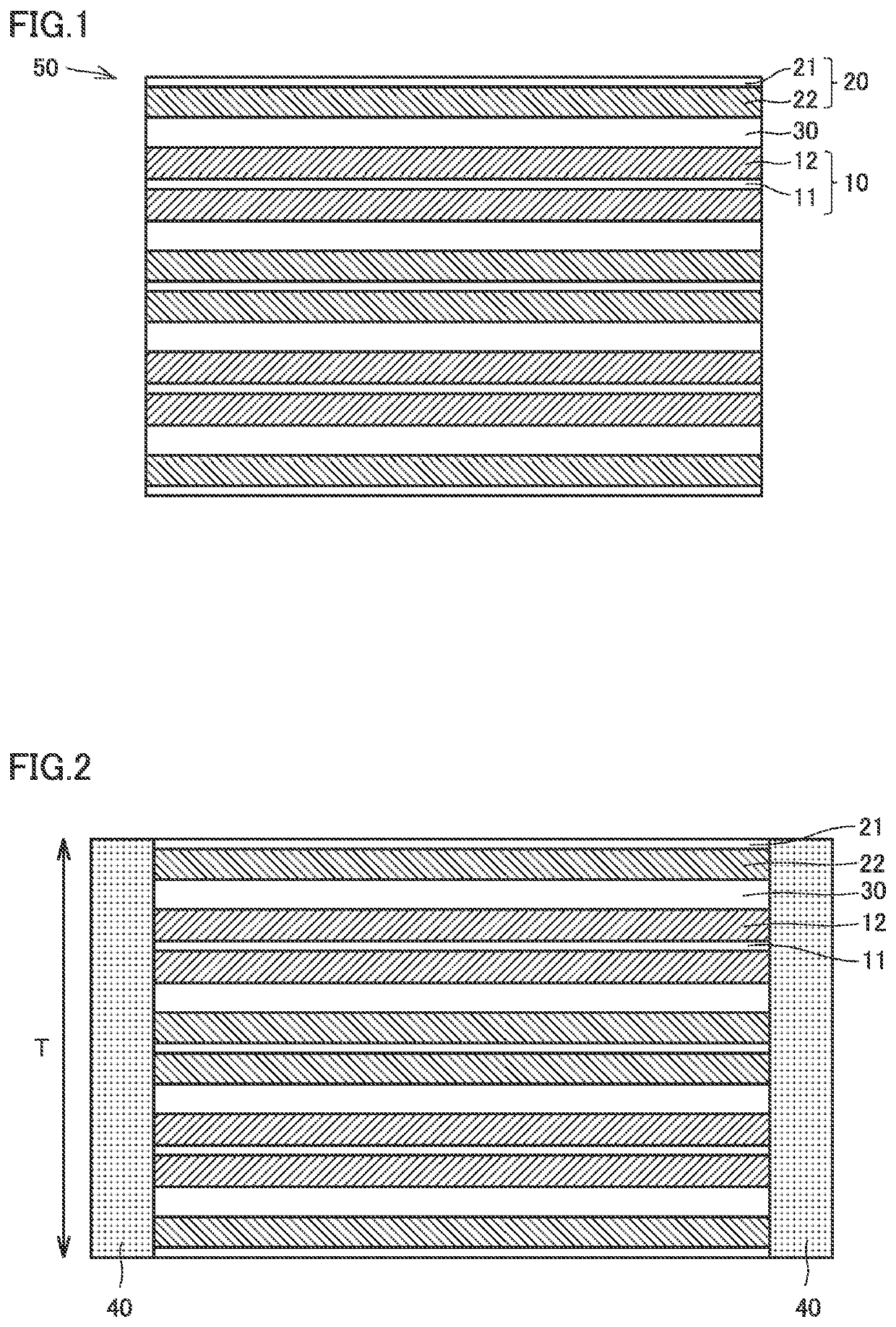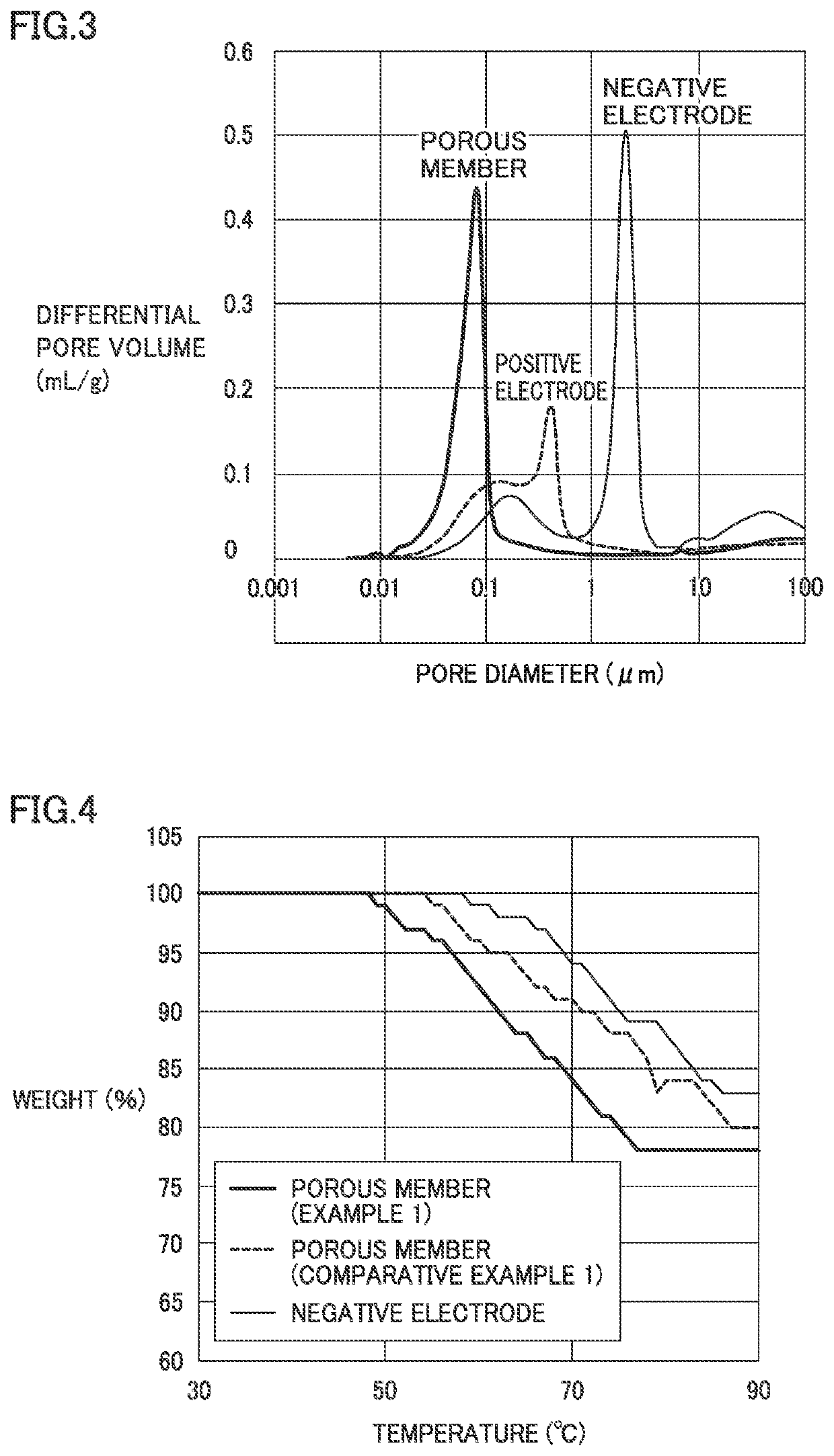Lithium ion secondary battery
a secondary battery and lithium ion technology, applied in the field of lithium ion secondary batteries, can solve the problems of uneven liquid distribution, insufficient electrolyte solution on the upper side and excessive on the lower side, and reduce so as to achieve the effect of lowering the capacity retention of the battery
- Summary
- Abstract
- Description
- Claims
- Application Information
AI Technical Summary
Benefits of technology
Problems solved by technology
Method used
Image
Examples
example 1
[0058](Manufacturing of Positive Electrode)
[0059]Materials below were prepared.
[0060]Positive electrode active material: LiNi1.3Co1.3Mn1.3O2
[0061]Conductive material: AB
[0062]Binder: PVdF
[0063]Dispersion medium: N-methyl-2-pyrrolidone
[0064]Positive electrode current collection foil: Al foil
[0065]Positive electrode slurry was prepared by mixing the positive electrode active material, the conductive material, the binder, and the dispersion medium. The positive electrode composite material was formed by applying the positive electrode slurry to a surface of a positive electrode current collector and drying the positive electrode slurry. The positive electrode was manufactured by compressing the positive electrode composite material.
[0066](Manufacturing of Negative Electrode)
[0067]Materials below were prepared.
[0068]Negative electrode active material: natural graphite
[0069]Conductive material: AB
[0070]Binder: PVdF
[0071]Solvent: water
[0072]Negative electrode current collection foil: Cu ...
examples 2 and 3
[0086]Lithium ion secondary batteries were manufactured as in Example 1 except for change in content of zeolite and polyacrylic acid which were materials for the porous member. In Example 2, a material obtained by mixing 70 mass % of zeolite and 30 mass % of polyacrylic acid was employed as the material for the porous member, and in Example 3, a material obtained by mixing 60 mass % of zeolite and 40 mass % of polyacrylic acid was employed as the material for the porous member.
Comparative Examples 1 to 3
[0087]Lithium ion secondary batteries were manufactured as in Example 1 except for change in material for the porous member from zeolite to alumina and change in content of alumina and polyacrylic acid and in median diameter d50 of alumina. In Comparative Example 1, a material obtained by mixing 80 mass % of alumina (having median diameter d50 of 15 μm) and 20 mass % of polyacrylic acid was employed as the material for the porous member. In Comparative Example 2, a material obtained ...
examples 1 to 3
[0104]As shown in Table 1, in Examples 1 to 3, the porous member was smaller in average pore diameter than the positive electrode and the negative electrode. The porous member was higher in porosity than the positive electrode and the negative electrode. The recovery rate was from 6 to 8%.
PUM
| Property | Measurement | Unit |
|---|---|---|
| pore diameter | aaaaa | aaaaa |
| pore diameter | aaaaa | aaaaa |
| porosity | aaaaa | aaaaa |
Abstract
Description
Claims
Application Information
 Login to View More
Login to View More - R&D
- Intellectual Property
- Life Sciences
- Materials
- Tech Scout
- Unparalleled Data Quality
- Higher Quality Content
- 60% Fewer Hallucinations
Browse by: Latest US Patents, China's latest patents, Technical Efficacy Thesaurus, Application Domain, Technology Topic, Popular Technical Reports.
© 2025 PatSnap. All rights reserved.Legal|Privacy policy|Modern Slavery Act Transparency Statement|Sitemap|About US| Contact US: help@patsnap.com


